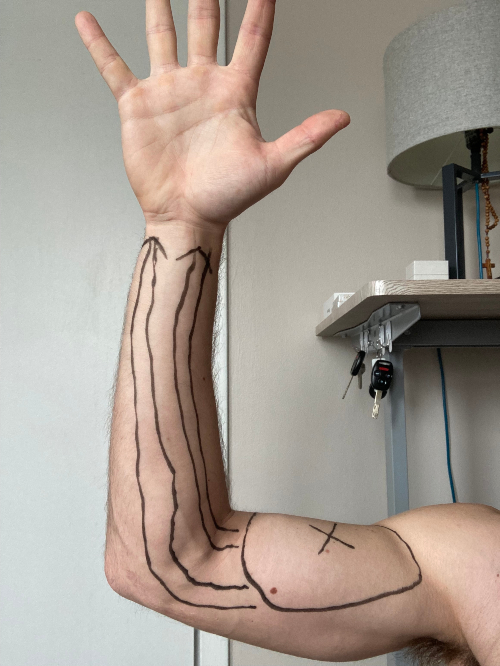I am very excited to say that I may have found the best solution yet to solve a long-standing problem of mine.
From the time I was a younger child to my mid teens, I consistently played baseball. Specifically, I loved pitching and didn’t think much of the preparation and recovery work that I should’ve been doing to take good care of my throwing arm.
Because of this, I ended up partially tearing a ligament in my right arm that runs through the inside of the elbow called the ulnar collateral ligament (UCL). I got surgery on that arm and the other one because the doctor took a ligament from the left arm to put into the right arm for extra support.
This ended up weakening both of my arms.
Post surgery, the physical therapy was not as helpful as expected and the doctor didn’t take my case as seriously as I would’ve hoped, so he stopped the recovery process and said I was good to go.
This has subsequently left me with elbows and forearms that feel weaker than before and that are susceptible to getting very sore from exercises that are not terribly strenuous (rock climbing, boxing, pull ups, other pulling movements).
So I’ve dealt with some unnecessary pain and soreness for several years now without much of an idea on how to address it. That was not until I came across the subject of myofascial release and the concept of self-healing.
Now that I have used myofascial release to help heal other ailments like plantar fasciitis, achilles tendonitis, and general tightness, I figured I could do the same with the rest of my body.
This was the first time I addressed a part of my upper body and I was a little intimidated to do so at first. But the results I have felt so far speak for themselves.
I usually can’t do a solid boxing workout, a bunch of pull ups, or for weight lifters, a ‘back and bicep day,’ without feeling some soreness. Lately, I have been pushing myself in the gym harder than usual and even still, I have not experienced any unexpected soreness which is new to me for my elbows and forearms.
The technique itself is actually one of the simpler ones I’ve tried and one of the least painful, which should be encouraging for you.

All you need for this is a ball – not the usual massage ball I recommend, that one is too small and too firm for this. I would recommend something like a softball because it’s a bit bigger so it has some height off the ground and it has some give to it when you apply pressure. I used a toy ball myself because that’s what I had at the time and I was amazed how well it worked.
All I did was lay flat on my stomach with my arm straight out to the side, perpendicular to my body. I placed the ball under the lowest part of my bicep first, working my way up through the rest of the bicep, and rolled from side to side as I made my way up.
It’s important to roll across the bicep and not up and down because with myofascial release work, you want to go against the way the muscles run, not with them. When you find tender spots, hang in there with the ball and pin them into positions that those adhesions can’t slide away from.
In this particular technique, there’s no bone in that part of the body to press the adhesions into with the ball, so you’re just looking for a point at which the adhesion can’t move any further while you’re putting pressure on it.
I only needed about 5-10 minutes of this on each arm and I could feel some very slight tingling going down into my hands and fingers. This is a great sign because it means that you have just allowed for some extra blood flow to circulate through that part of the body.
This is the ultimate goal of myofascial release: release the adhesions that are restricting blood flow so you can allow the blood to get through that space and nourish the injured part of your body. The blood carries essential nutrition that feeds and heals your body.


Leave a Reply